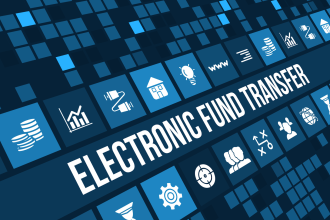In the rapidly evolving landscape of global finance, the advancement of digital currencies has emerged as a significant topic of discussion. Two prominent players in this domain are Stellar and Central Bank Digital Currencies (CBDCs). This article delves into the progress made by these financial systems and explores their potential impact on the global economy. As a crypto follower, you might have heard of mining. You must also extend your knowledge and know how you can mine multiple crypto for diversity.
Understanding Stellar: Revolutionizing Cross-Border Payments
What is Stellar?
Stellar is a blockchain platform that operates on an open-source framework, with its primary goal being the facilitation of cost-effective and efficient cross-border transactions. By leveraging a decentralized network, Stellar aims to bridge the divide between conventional financial systems and emerging digital technologies. The platform’s native currency, Lumens (XLM), acts as a bridge asset, allowing for seamless conversion between various currencies.
The Advantages of Stellar
Stellar offers several advantages over traditional banking systems and other cryptocurrencies:
- Speed and Scalability: Stellar’s network can process a high volume of transactions at rapid speeds, making it well-suited for cross-border payments.
- Low Transaction Costs: By utilizing Lumens as a bridge asset, Stellar significantly reduces the costs associated with currency conversions and intermediary fees.
- Inclusivity: Stellar’s open network allows anyone to participate, empowering individuals and businesses in underserved regions to access affordable financial services.
- Smart Contract Capabilities: Stellar supports the creation and execution of smart contracts, enabling programmable transactions and facilitating complex financial operations.
Stellar’s Impact on Global Finance
The progress of Stellar has the potential to revolutionize global finance in several ways:
- Financial Inclusion: Stellar’s low-cost and accessible platform can extend financial services to the unbanked and underbanked populations, fostering greater economic participation and reducing inequality.
- Efficient Remittances: Stellar’s fast and inexpensive cross-border transactions can streamline remittance processes, enabling individuals to send money to their families and loved ones abroad more efficiently.
- Reduced Intermediary Risks: Stellar’s decentralized nature minimizes reliance on intermediaries, reducing counterparty risks and enhancing the security of financial transactions.
- Partnerships with Financial Institutions: Stellar has established partnerships with various financial institutions, including banks and remittance providers, which bolsters its credibility and widens its network reach.
The Rise of Central Bank Digital Currencies (CBDCs)
Understanding CBDCs
Central Bank Digital Currencies (CBDCs) are digital representations of a country’s fiat currency issued by its central bank. CBDCs leverage blockchain or distributed ledger technology to enable secure and efficient transactions.
The Progress of CBDCs
CBDCs have gained significant traction in recent years, with various central banks exploring their potential implementation. Some notable examples include:
- China’s Digital Yuan: The People’s Bank of China has made significant strides in developing and piloting its digital currency, the Digital Currency Electronic Payment DCEP), also known as the Digital Yuan.
- Sweden’s e-Krona: The Riksbank, Sweden’s central bank, is actively researching the feasibility of an e-Krona, exploring the benefits and risks associated with a digital currency.
- The Bahamas’ Sand Dollar: The Central Bank of The Bahamas launched the Sand Dollar, the world’s first fully deployed CBDC, to provide residents with secure and inclusive digital payment options.
The Potential Impact of CBDCs
The introduction of CBDCs can have far-reaching implications for the global financial landscape:
- Enhanced Monetary Policy: CBDCs enable central banks to have more direct control over monetary policy, facilitating greater flexibility and responsiveness to economic conditions.
- Financial Stability and Security: CBDCs can improve the security and traceability of transactions, reducing the risks associated with counterfeit currency and illicit activities.
- Financial Inclusion: CBDCs have the potential to extend financial services to marginalized populations who may lack access to traditional banking systems.
- Cross-Border Transactions: CBDCs can streamline cross-border transactions, reducing costs and settlement times while enhancing transparency and regulatory compliance.
Conclusion
As the global financial systems continue to advance, Stellar and Central Bank Digital Currencies (CBDCs) represent two significant developments shaping the future of finance. Stellar’s focus on cross-border payments and its potential to drive financial inclusion holds promise for individuals and businesses worldwide. Simultaneously, the progress of CBDCs heralds a new era of digitized national currencies, offering benefits such as enhanced financial stability, security, and efficiency. As these technologies mature, they have the potential to reshape the global economy, making financial services more accessible, inclusive, and efficient for all.














